Why are our senses important?
- Sensory development is important for a child’s overall health and wellbeing.
- It forms the foundation of a child’s learning and perception.
- Sensory systems do not develop in isolation.
Sensory Integration (SI) was introduced in the 1970s by A. Jean Ayres, who defined sensory integration as “the neurological process that organizes sensation from one’s own body and from the environment and makes it possible to use the body effectively within the environment” (Polenick & Flora, 2012, p. 29).

Treatment is designed to provide controlled sensory experiences so that an adaptive motor response is elicited (Baranek, 2002).
Interventions based on the Classic SI Theory should:
- Be child-centered
- Be planned and have controlled sensory input
- Be in accordance with the needs of the child
- Put emphasis on sensory stimulation and active participation
- Create an environment for “just-right challenge”
The activities provided are meant to help the nervous system modulate, organize, and integrate information from the environment, resulting in future adaptive responses (Baranek, 2002).
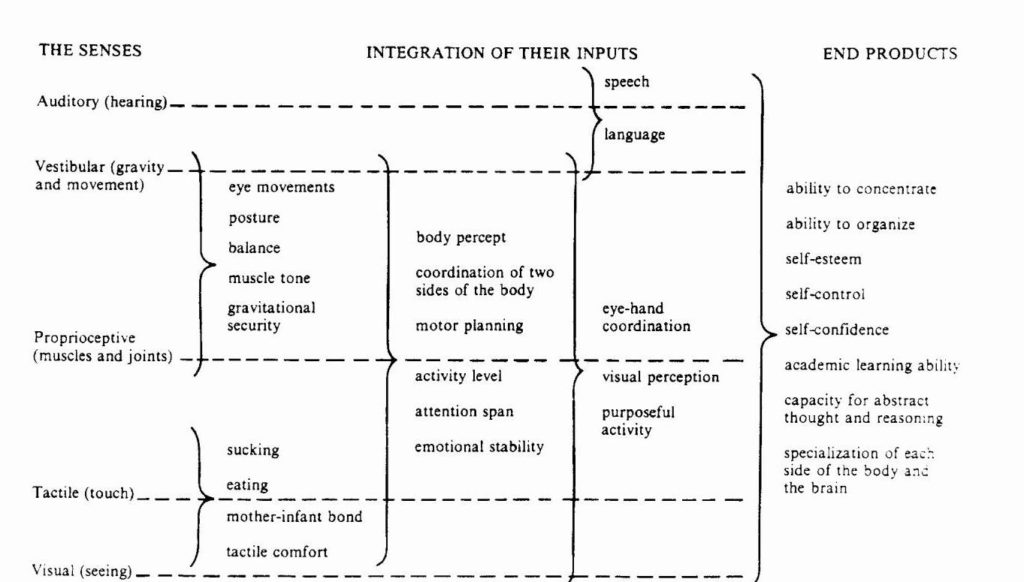
Arousal level
Arousal refers to the ability to maintain an optimal performance level and how alert we are in order to sustain our attention and complete tasks as the environment demands.
Self-regulation is the ability to achieve, sustain and change our arousal level to meet the changing demands of the task or situation. Difficulty with regulation may make it difficult for some children; they are unable to “shift gears”.

Fight, Flight, Freeze: What these response mean
The body’s alarm system is in the brain. The amygdala, part of the limbic system, is designed to recognize danger and prepare our body to react to it. When it’s working properly, it should send signals only when there is real danger present. For some kids, the system is faulty and transmits false alarms, sending them into full blown fight, flight or freeze mode weekly, daily or even multiple times a day. Often, this faulty alarm system is due to increased cortisol levels due to prenatal stress or early childhood trauma. It can also be due to conditions such as SPD (sensory processing disorder), where sensory triggers cause alarm sensors to sound when no real danger is present.
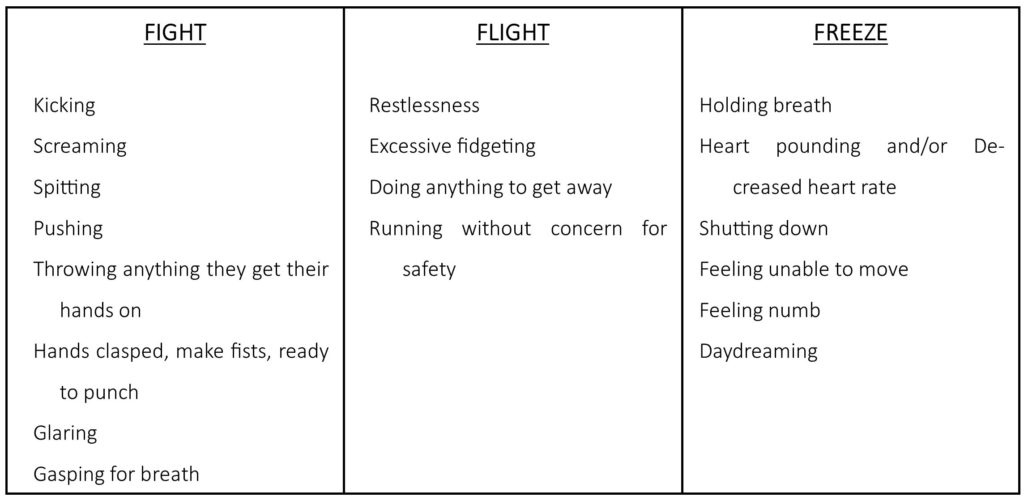
Sensory processing disorders
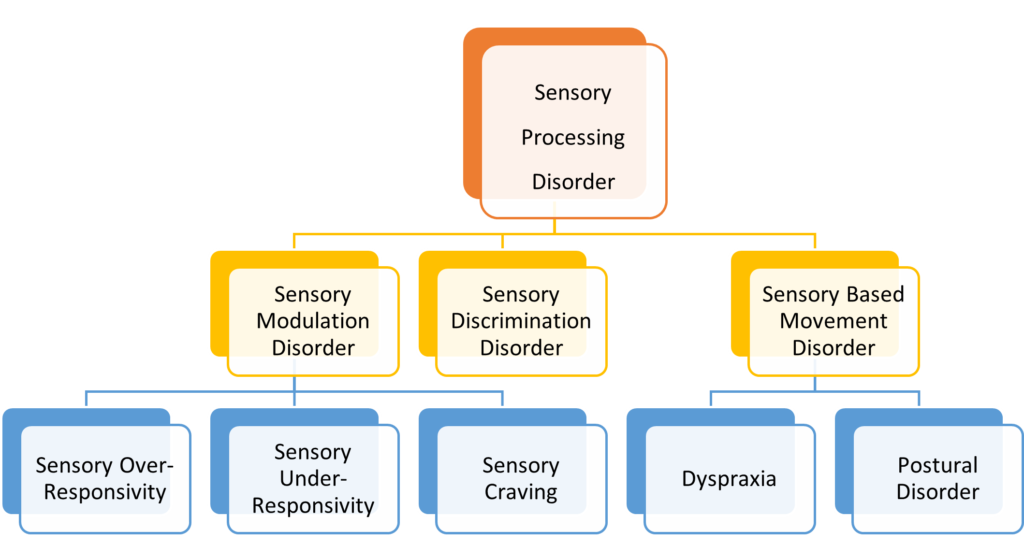
1. Sensory Modulation: Sensory modulation challenges suggest that the brain either over-responds to, or under-responds to sensory information. For example, if someone over-responds to touch they may be very aware of the label in the back of their clothes. If someone is under-responsive to touch, they may not notice someone tapping them on the shoulder. Problems with modulation can cause the person to become anxious, fearful, angry and frustrated.
2. Sensory Discrimination: This is when the brain has difficulties making sense of the sensory information it receives. The person then struggles to interpret subtle differences in the sense. For example, being able to feel two different points of touch that are close together – this is useful when we are doing things like doing up buttons.
3. Sensory-based Praxis Problems: Not all problems with praxis are a result of sensory integration. Jean Ayres identified two types of praxis difficulties associated with underlying sensory issues – Somatodyspraxia and Visuodyspraxia. Somatodyspraxia is when a person has problems with praxis as well as problems with processing touch and proprioceptive senses, while visuodyspraxia is a problem with praxis and visual processing.
4. Vestibular-bilateral Functional Problems: These are a result of problems with our vestibular sense and can result in poor balance and difficulties with coordinating two sides of the body.
Let’s take a look at a few strategies to tackle sensory-processing challenges:
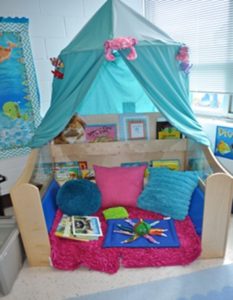 Sensory corner: A calm-down corner is a designated space in a home or classroom with the sole intent of being a safe space for children to go to when they feel their emotions are running too high and they need to regain their emotional and physical control. These spaces are equipped with comforting objects and soothing materials that can promote mindfulness, breathing and reflection.
Sensory corner: A calm-down corner is a designated space in a home or classroom with the sole intent of being a safe space for children to go to when they feel their emotions are running too high and they need to regain their emotional and physical control. These spaces are equipped with comforting objects and soothing materials that can promote mindfulness, breathing and reflection.
Don’t think of it as a “time-out” or punishment – there shouldn’t be any stigma associated with the calm-down corner.
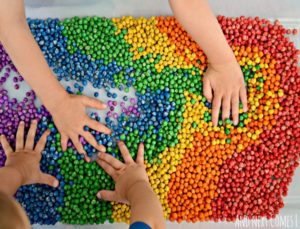 Sensory play: Sensory play is important for brain development, as it can strengthen sensory-related synapses and functions. The sensory activities allow children to refine their thresholds for different sensory information helping their brain to create stronger connections to process and respond to sensory information. As the child develops trust and understanding of this texture, it helps build positive pathways in the brain to say it is safe to engage with this texture. Sensory play literally helps shape what children believe to be positive and safe in the brain – ultimately, shaping the choices children make and impacting behaviour.
Sensory play: Sensory play is important for brain development, as it can strengthen sensory-related synapses and functions. The sensory activities allow children to refine their thresholds for different sensory information helping their brain to create stronger connections to process and respond to sensory information. As the child develops trust and understanding of this texture, it helps build positive pathways in the brain to say it is safe to engage with this texture. Sensory play literally helps shape what children believe to be positive and safe in the brain – ultimately, shaping the choices children make and impacting behaviour.

Deep Touch Pressure: This works on the principle of applying weight or pressure to provide proprioceptive input. This input calms and modulates the central nervous system which, in turn, aids the processing of sensory information (Grandin 1992, McClure & Holtz-Yotz 1991). This calming and modulating has the effect of making the child feel more grounded and lowers their state of arousal. This lowered state of arousal then reduces repetitive self-stimulatory behaviours (such as spinning, hand flapping, and rocking) and allows better focus, concentration, and attention.
Dr. Temple Grandin describes Deep Touch Pressure as follows: “Deep Touch Pressure is the type of surface pressure that is exerted in most types of touching, holding, stroking, petting of animals, or swaddling.” (Grandin, 1992).
 Heavy-work activities: Heavy work is any type of activity that pushes or pulls against the body. Heavy work is designed to provide input in safer, more consistent ways. When kids do heavy work, it can help them feel more organized before they need to seek input.
Heavy-work activities: Heavy work is any type of activity that pushes or pulls against the body. Heavy work is designed to provide input in safer, more consistent ways. When kids do heavy work, it can help them feel more organized before they need to seek input.
The most effective heavy work activities stimulate as many muscles and joints as possible at the same time, and for a short period of time. That means not all heavy work is equal. Some activities, like swimming, are more effective and powerful than others.
 Auditory Integration Therapy (AIT): This is an intervention developed to correct or improve auditory hypersensitivity, distortions, and delays in the signals that interfere with an individual’s ability to process auditory information normally. AIT involves listening to music that has been computer modified to remove frequencies to which an individual demonstrates hypersensitivities and to reduce the predictability of auditory patterns. The individual listens per headphones to a program of specifically filtered and modulated music with a wide frequency range.
Auditory Integration Therapy (AIT): This is an intervention developed to correct or improve auditory hypersensitivity, distortions, and delays in the signals that interfere with an individual’s ability to process auditory information normally. AIT involves listening to music that has been computer modified to remove frequencies to which an individual demonstrates hypersensitivities and to reduce the predictability of auditory patterns. The individual listens per headphones to a program of specifically filtered and modulated music with a wide frequency range.
Sensory diet: This refers to “the multisensory experiences that one normally seeks on a daily basis to satisfy one’s sensory appetite; a planned and scheduled activity program that an occupational therapist develops to help a person become more self-regulated.” (Kranowitz, 1998)

It is the amount and type of sensory input needed to be most alert, adaptable, and skillful in one’s environment. With the right input, our bodies feel calm, alert and ready to tackle daily challenges. Negative sensory input can have a disorganizing effect on the body.
PLEASE REMEMBER THERE IS NO RECIPE THAT ALWAYS WORKS WITH CHILDREN.
REFERENCES:
- Effectiveness of Sensory Integration Interventions in Children With Autism Spectrum Disorders: A Pilot Study (Beth A. Pfeiffer, PhD, OTR/L, BCP; Kristie Koenig, PhD, OTR/L, FAOTA; Moya Kinnealey, PhD, OTR/L, FAOTA; Megan Sheppard, MOT, OTR/L and Lorrie Henderson, PhD)
- State of the Science of Sensory Integration Research With Children and Youth (Beth Pfeiffer; Teresa A. May-Benson;Stefanie C. Bodison
- Lee, Mackenzie, “Sensory Integration: Helping Students with Autism Incorporate Sensory Integration Techniques” (2013).
- Sensory Integration: Helping Students with Autism Incorporate Sensory Integration Techniques Mackenzie Lee St. John Fisher (2013)
- Sensory Integration (Katherine E. Guardado; Shane R. Sergent August 3, 2021).
- www.griffinot.com
- www.sensoryintegrationeducation.com
- https://pathways.org
- www.autism.org
- www.aota.org
RESOURCES:
- The Out-of Sync Child by Carol Stock Kranowitz, M.A
- The Out-of Sync Child has Fun by Carol Stock Kranowitz, M.A.
- The Explosive Child by Ross W. Green, Ph.D.
- The Asperger’s Answer Book by Susan Ashley, Ph.D.
- My Kitty Catsberger by John M. Ortiz, Ph.D.
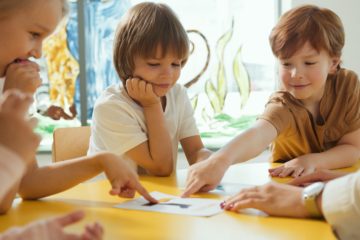


0 Comments